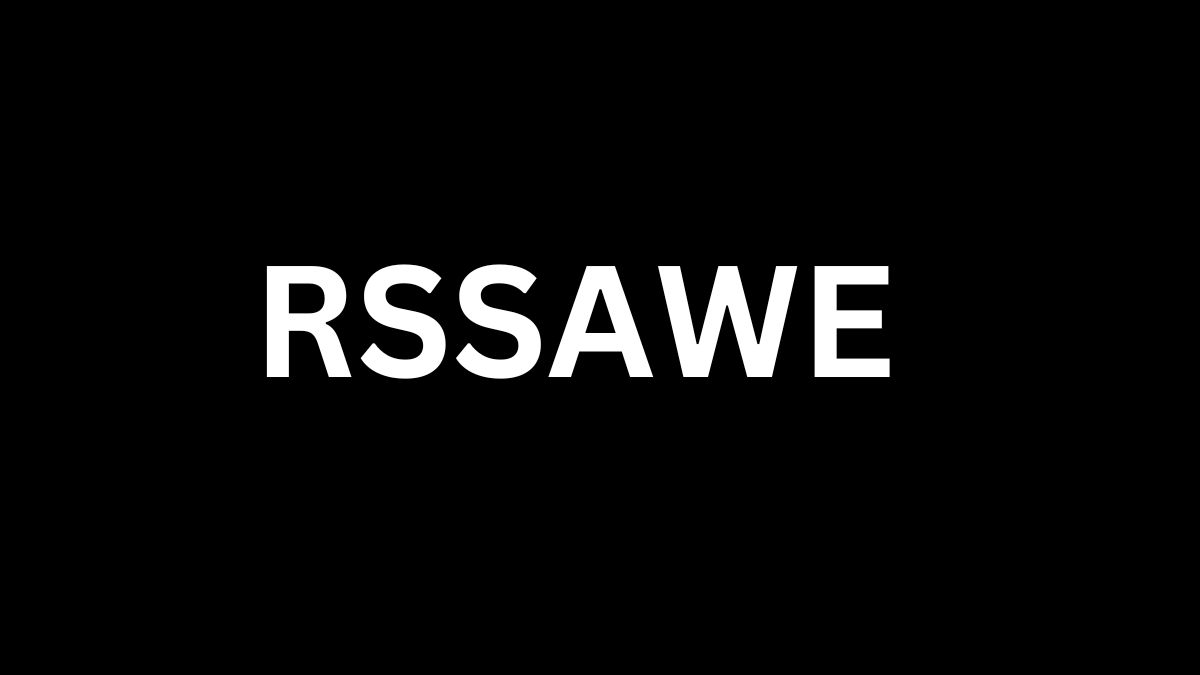What is RSSAWE?
Definition and Components
RSS’AWE stands for “Robust Systematic Structured Adaptive Work Environment.” It is a comprehensive framework that integrates robust systems, structured methodologies, and adaptive work environments to enhance organizational performance. The core components of RSS’AWE include system robustness, systematic approaches, structured processes, and adaptive capabilities.
Why It’s Crucial in Modern Context
In the modern business landscape, where change is constant and competition is fierce, having a robust and adaptive framework like RSS’AWE is crucial. It ensures that organizations can withstand disruptions, maintain efficiency, and continuously innovate to stay ahead.
Historical Background
Evolution of RSS’AWE
The concept of RSS’AWE has evolved over the years, influenced by advancements in technology, management theories, and organizational practices. Initially rooted in manufacturing and industrial processes, it has expanded to encompass various sectors, including healthcare, finance, and information technology.
Core Principles of RSS’AWE
Fundamental Concepts
The core principles of RSS’AWE revolve around robustness, systematic approaches, structure, and adaptability. These principles ensure that the framework is not only resilient but also flexible enough to adapt to changing circumstances and emerging challenges.
Key Benefits of RSS’AWE
Advantages and Outcomes
Implementing RSS’AWE offers numerous benefits, including improved efficiency, enhanced innovation, better risk management, and increased competitiveness. Organizations that adopt RSS’AWE can achieve higher productivity, better quality, and greater customer satisfaction.
Read Also: 10 Surprising Benefits Of Investing In Ama77k Expert Insights
Implementation Strategies
Step-by-Step Guide
Successfully implementing RSS’AWE requires a strategic approach. This involves conducting a thorough assessment of the current processes, identifying areas for improvement, and systematically integrating the RSSAWE components. Training and development, continuous monitoring, and iterative enhancements are also crucial for successful implementation.
Common Challenges
Obstacles and Solutions
While RSS’AWE offers many benefits, implementing it can present challenges. Common obstacles include resistance to change, lack of resources, and insufficient training. Overcoming these challenges requires strong leadership, effective communication, and a commitment to continuous improvement.
Case Studies
Successful Applications
Examining case studies of successful RSS’AWE applications can provide valuable insights and practical examples. These case studies highlight how different organizations have leveraged RSS’AWE to achieve significant improvements in efficiency, innovation, and overall performance.
Technological Integration
Incorporating RSS’AWE with Modern Tech
Integrating RSS’AWE with modern technologies such as artificial intelligence, machine learning, and automation can amplify its benefits. These technologies can enhance data analysis, streamline processes, and provide deeper insights, making the RSSAWE framework even more powerful.
RSS’AWE in Different Industries
Sector-Specific Applications
RSS’AWE is versatile and can be applied across various industries. In healthcare, it can improve patient care and operational efficiency. In finance, it can enhance risk management and decision-making processes. Understanding sector-specific applications helps tailor the framework to meet unique industry needs.
Best Practices
Tips for Optimal Use
Adopting best practices is essential for maximizing the benefits of RSS’AWE. This includes regular training, continuous improvement, leveraging technology, and fostering a culture of adaptability and innovation.
Read Also : The Timeless Romance of “Werewolfs HeartSong”: A Supernatural Tale
Future Trends
Predictions and Innovations
The future of RSS’AWE is promising, with continuous advancements and innovations on the horizon. Emerging trends include increased integration with advanced technologies, greater emphasis on sustainability, and more personalized and adaptive applications.
Expert Insights
Opinions from Industry Leaders
Insights from industry leaders and experts can provide valuable perspectives on the effective implementation and benefits of RSS’AWE. Their experiences and recommendations can guide organizations in leveraging the framework to its full potential.
Comparative Analysis
RSSAWE vs. Other Systems
Comparing RSS’AWE with other frameworks and systems highlights its unique advantages. While other systems may focus on specific aspects, RS’SAWE’s comprehensive and adaptive nature sets it apart, offering a more holistic approach to organizational improvement.
User Experience
Enhancing Usability
Enhancing the user experience is critical for the successful adoption of RSS’AWE. This involves designing user-friendly interfaces, providing adequate training, and ensuring that the system is intuitive and easy to use.
Sustainability and RSSAWE
Eco-Friendly Practices
Incorporating sustainability into RSS’AWE is increasingly important. This involves adopting eco-friendly practices, reducing waste, and promoting sustainable development. Sustainable RSS’AWE practices not only benefit the environment but also enhance organizational reputation and compliance.
Training and Development
Educating Stakeholders
Training and development are key to successful RSS’AWE implementation. Providing comprehensive training programs, continuous learning opportunities, and resources for stakeholders ensures that everyone is equipped to contribute to the framework’s success.
Legal and Ethical Considerations
Compliance and Ethics
Implementing RSS’AWE requires careful consideration of legal and ethical aspects. Ensuring compliance with regulations, adhering to ethical standards, and promoting transparency and accountability are essential for building trust and credibility.
Cost-Benefit Analysis
Financial Implications
Conducting a cost-benefit analysis helps organizations understand the financial implications of implementing RSS’AWE. This involves evaluating the initial investment, ongoing costs, and potential returns to make informed decisions.
Feedback and Continuous Improvement
Iterative Enhancements
Feedback and continuous improvement are integral to RSS’AWE. Regularly collecting feedback from users, monitoring performance, and making iterative enhancements ensure that the framework remains effective and relevant.
Metrics for Success
Measuring Effectiveness
Measuring the success of RSS’AWE involves defining key performance indicators (KPIs) and regularly monitoring them. This helps organizations track progress, identify areas for improvement, and ensure that the framework delivers the desired outcomes.
Tools and Resources
Essential Aids and Materials
Various tools and resources are available to support RSS’AWE implementation. These include software applications, training materials, and consultancy services that can help organizations effectively adopt and leverage the framework.
Community and Support
Building a Support Network
Building a community and support network is crucial for the successful adoption of RSS’AWE. This involves connecting with other organizations, participating in forums and groups, and sharing best practices and experiences.
Conclusion
Summary and Final Thoughts
RSS’AWE is a powerful framework that can significantly enhance organizational efficiency and innovation. By understanding its principles, benefits, and implementation strategies, organizations can effectively leverage RSS’AWE to achieve their goals and stay competitive in a dynamic business environment.
FAQs
What are the main components of RSS’AWE?
The main components of RSS’AWE include system robustness, systematic approaches, structured processes, and adaptive capabilities, all working together to enhance organizational performance.
Why is RSS’AWE important in today’s business environment?
RSS’AWE is crucial because it provides a robust and adaptive framework that helps organizations withstand disruptions, maintain efficiency, and continuously innovate, which is essential in a rapidly changing business landscape.











